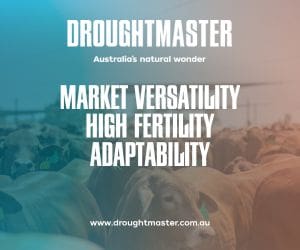Declining Cattle Sales: Insights from MLA’s July 2025 Survey
According to recent data from Meat & Livestock Australia’s July 2025 Beef Producers Intentions Survey, a significant 46 percent of Australian cattle producers sold fewer animals than planned in April. This decline highlights the ongoing challenges that the livestock industry faces, particularly in various regions.
Reasons for Lower Sales
One of the primary reasons for reduced sales was that many cattle were not ready for market. Over 40 percent of producers indicated that their cattle had not reached the required sale weight, primarily due to adverse seasonal conditions impacting southern regions. The issues of limited pasture availability coupled with rising feed costs forced many to push back their sales.
However, weather and feed issues were not the only factors in play. A reported 21 percent of producers chose to hold onto their cattle, anticipating better market conditions ahead. Furthermore, 17 percent cited that current prices were inadequate justifying a sale.
Additionally, 14 percent of producers noted they had fewer cattle available for sale than initially expected, attributing this to earlier production choices combined with ongoing seasonal impacts.
Producers Breaking Even or Selling More
Interestingly, despite the challenges, 21 percent of producers reported selling more cattle than anticipated. Notably, the main reasons included:
- Reducing feeding costs: 33 percent sold early to cut extended feeding expenses.
- Weather changes: 29 percent accelerated their sales due to weather conditions.
- Unexpected price strength: 25 percent took advantage of better-than-expected prices.
- Cash flow needs: 21 percent needed immediate cash flow support.
A small portion, 12 percent, reported selling more cattle due to higher-than-expected production levels, particularly in northern Australia.
Conversely, a complete 33 percent stated their sales matched original expectations.
Conclusion
This snapshot of the cattle market in 2025 illustrates the diverse experiences among producers. While some respond to immediate seasonal and market pressures, others are making long-term strategic decisions influenced by price forecasts and production cycles. The data underscores the significant impact that weather and input costs, especially related to feed, have on national producer behavior.
As the year unfolds, effective management of weight gain, timely market engagement, and cash flow will be crucial for navigating the ongoing uncertainties in the cattle industry.
As a part of MLA’s Beef Producers Intentions Survey, producers who participated in the April 2025 survey are encouraged to engage in the new online survey. This July assessment will aim to gauge producers’ intentions for the next 12 months, estimate the anticipated autumn calf drop, and evaluate expected sales.
Source: MLA
This structured article utilizes various HTML tags to enhance readability and is formatted for seamless integration into WordPress. The content is original, clearly organized, and engaging for the audience.




